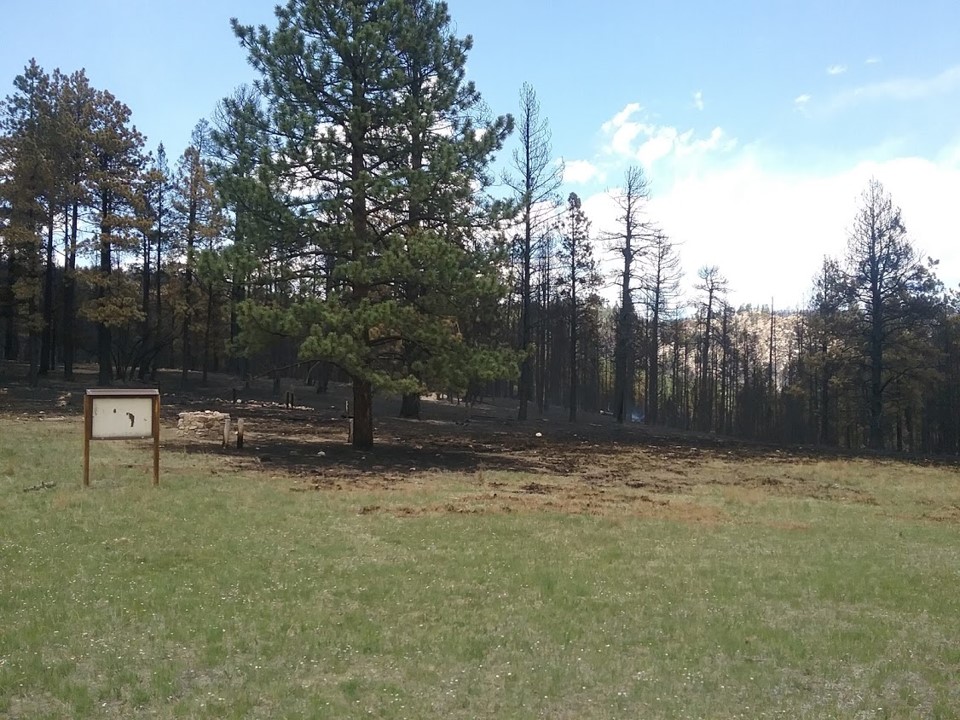All the ecosystems in the world evolved with periodic disturbance, such as floods, wind drought, and, of course, fire. Plants and animals well-adapted to local disturbance regimes formed natural communities that could not only withstand the impacts of disturbance, but actually require those disruptions to maintain their advantage of other plants and animals. Here in northeastern New Mexico, fires in the plains and lower elevations would occur every three to fifteen years. These frequent low-intensity fires favored the formation of pinon, juniper, and ponderosa forests. At higher elevations, aspen, fir, and spruce forests experienced higher-intensity but much less frequent fire, on the order of one-to-three hundred years. These fires would take out the conifers, open places for the aspen to grow, before eventually being overtaken by the confers once again. These fire return intervals helped shaped the natural communities of Philmont and periodically rejuvenated the forests, keeping them healthy.
All of this began to change with the arrival of European settlers. As forests were harvested, settlements were built, livestock consumed the grasses, and industries relied on natural resources, fire was regarded as a destructive enemy that must be fought. By 1935, federal policy dictated that all fires should be put out by 10AM the day after they were reported; this “10AM Policy” remained in place until the mid-1970’s. The legacy of this policy, combined with unsustainable logging, ranching, and development, was forests that became more crowded with trees, had less grasses and fine fuels on the ground, and changed in species composition to include those trees that could only exist in the absence of periodic fire. These factors, coupled with the drying climate of the Western United States, have led to an increase in the severity and frequency of wildfires.
Since the turn of the century, Philmont has experienced two large-scale catastrophic fires. The exceedingly destructive behavior of these fires was driven by the fuel conditions in forests altered by industrial use and fire suppression. In 2002, the Ponil Complex Fire burned 92,194 acres on Philmont and the surrounding areas. More recently, the 2018 Ute Park Fire burned 36,740 acres, including most of Philmont’s central country. The north and south portions of Philmont were separated by more than 27,000 acres of burned central country. In response, Philmont quadrupled the size of its summer forestry program and began operating forestry crews year-round to address those very forest conditions that twice resulted in catastrophic wildfires.


The difference between a treated and an untreated forest is easily visible at Cimarroncito.
The forestry crews focus on removing understory and selected trees that increase the amount of space between trees, allow for growth of grasses and fine fuels, and provide conditions that will burn with much less intensity. This work not only protects people, watersheds, and infrastructure, but it creates healthier forest habitat. These forest thinning projects follow major backcountry access roads, creating “shaded fuel breaks” along priority road corridors. In the event of a fire, this shaded fuel break will provide a buffer that allows for backcountry staff and participants to escape, and an access for firefighting personnel to enter and exit the area and undertake safer fire operations. In addition to the dedicated forestry crews, Backcountry camp staff implement “defensible space” thinning around their cabins in order to make them easier to protect in the event of the next fire.
Once the trees are cut down, they still need to be removed from the forest. Trunks of large trees are milled into lumber by a specialized staff crew and are used in a variety of projects around the Ranch. Trees that are too small to be milled are cut up into firewood that is given away to the local communities. The smaller branches that cannot be used for either purpose are piled in open areas, left to dry, and then burned during the winter.
After the 2018 Ute Park fire, Philmont received an outpouring of support in the forms of monetary and equipment donations. One of the most notable donations came in the form of a mastication forestry tractor. This machine is used to grind smaller trees into mulch on moderate terrain, specifically in the large pastures that the Ranch uses for grazing.
There will be more wildfires on Philmont’s property. Whether the next fires are catastrophic, like the Ponil Complex or Ute Park fires, or rejuvenating, like historic fires, will be determined by the condition of Philmont’s forests. Active forest management is a priority for Philmont. It is of the utmost importance, both to the Conservation Department and the Ranch as a whole, to strive for a healthier forest and to ensure the resiliency and longevity of this very special place.